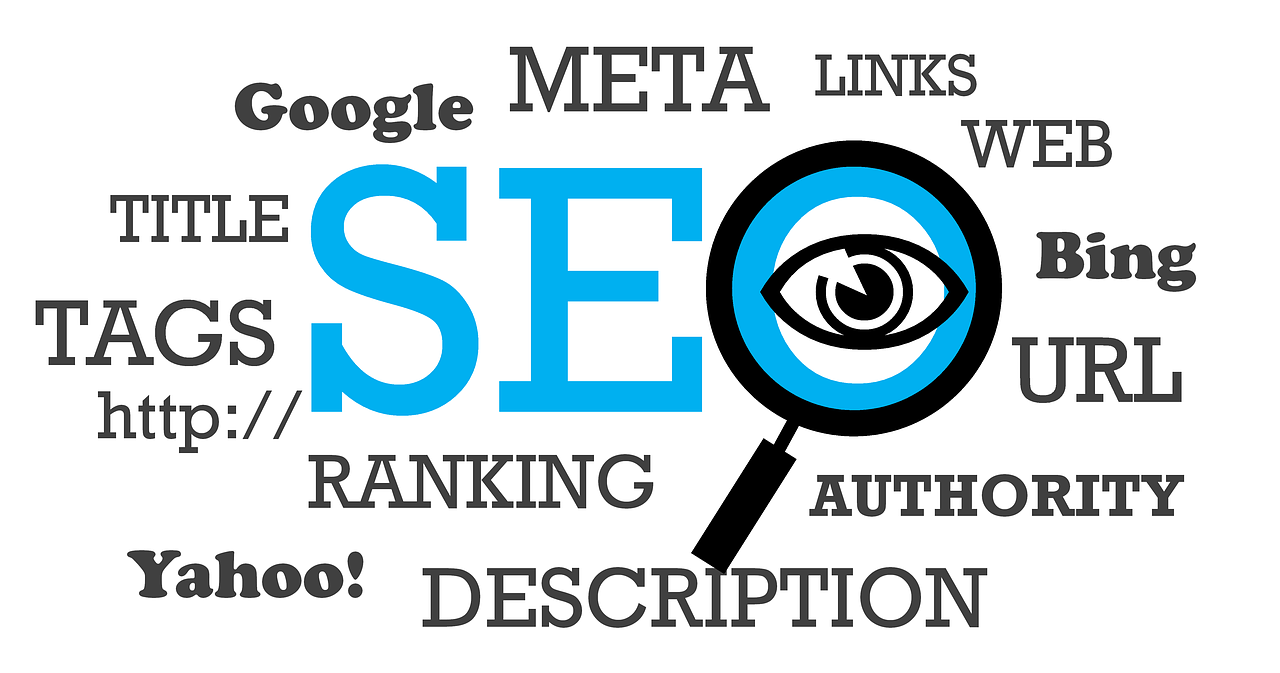Building Your Website’s Authority with an Optimal Backlink Ratio
In the complex and ever-evolving world of search engine optimization, backlinks remain one of the most critical factors for a website’s authority, credibility, and long-term success. While the concept of earning links seems straightforward, not all links are created equal. A balanced approach to backlink acquisition is not just a best practice; it is an essential strategy for sustainable growth. Relying solely on high-quality dofollow backlinks, while tempting for a quick boost, can create an unnatural profile that triggers red flags with search engines like Google. A truly healthy and resilient link profile is a diverse ecosystem that includes a mix of both dofollow and nofollow links. This delicate balance, when achieved correctly, signals to search engines that your website is earning organic, authentic, and widespread recognition. It acts as a digital fingerprint, telling a story of genuine engagement across the web. This article will provide a deeper look at the ideal backlink ratio, explain why this balance is crucial, and offer a strategic blueprint for building a robust and penalty-proof link profile.
At its core, a backlink profile is a collection of all the inbound links pointing to your website. Think of it as your site’s reputation on the web. Search engines analyze this reputation to determine your credibility and authority in a given niche. While a single dofollow link from a high-authority site can be a game-changer, a collection of links that lacks diversity can be a liability. An over-reliance on a single type of link can make your profile appear manipulated, a practice that search engines are specifically designed to detect and penalize. A natural link profile, on the other hand, is a vibrant mix of links from various sources and link types, reflecting the organic way content is shared and referenced on the internet. It’s not just about the number of links; it’s about the story your link profile tells about your website.
1. The Anatomy of a Backlink: Dofollow vs. Nofollow
To understand why a balanced ratio is so important, we first need to dissect the two primary types of backlinks: dofollow and nofollow. The distinction lies in a simple line of HTML code that dictates how search engines treat the link. Both are essential for a healthy link ecosystem, but they serve very different purposes.
- Dofollow Backlinks: This is the standard type of link. In a nutshell, it’s a vote of confidence. When one website links to another with a dofollow tag, it passes on SEO authority, often referred to as “link juice.” Search engines interpret these links as signals of trust and credibility. The more high-quality, relevant dofollow links a website has, the higher its domain authority and the better its chances of ranking for competitive keywords. These are the links that directly contribute to your site’s SEO value and are the primary focus of most link-building campaigns.
- Nofollow Backlinks: This type of link contains a specific attribute in its HTML code—’rel=”nofollow”‘—that instructs search engines not to pass on any SEO authority. While they may not directly improve your search rankings, nofollow links are anything but worthless. They are a critical component of a natural-looking link profile. Think of them as a form of social proof. Links from social media platforms, online forums, comments sections, and some high-authority news sites are often nofollow. They serve to diversify your link profile, make it appear more organic, and, most importantly, can drive significant referral traffic and brand awareness. A well-placed nofollow link on a highly-trafficked site can lead to a surge in visitors and even earn you future dofollow links. They are a vital part of a holistic SEO strategy that extends beyond just chasing rankings.
To further illustrate the key differences between these link types, consider the following comparison:
| Feature | Dofollow Backlink | Nofollow Backlink |
| SEO Value | Passes link authority (“link juice”) | Does not pass link authority |
| Primary Purpose | Boosts rankings and domain authority | Diversifies profile, drives traffic, builds brand |
| Search Engine Trust | Strong signal of trust and credibility | Signals natural link building activity |
| Common Sources | Guest posts, content mentions, resource pages | Social media, forums, comments, news sites |
| Contribution to Profile | Core foundation for SEO success | Essential for a natural-looking ecosystem |
2. The Dofollow Dilemma: Why Balance is Crucial
Many SEO professionals in the past believed that more dofollow links were always better. While this may have been true in the early days of search engines, it is a dangerous and outdated strategy today. A backlink profile that is 100% dofollow is a glaring red flag for search engine algorithms. It looks manufactured, as if the site owners are paying for links or using automated tools to build them. In the real world, a site with truly valuable content will naturally attract a mix of links from various sources—some will be dofollow, others will be nofollow. The algorithm is designed to detect this organic pattern. A profile with an overwhelmingly high percentage of dofollow links, especially if they’re coming from low-quality or irrelevant sources, can be flagged as manipulative. This could lead to a site-wide penalty, a sudden and severe drop in rankings from which it can be difficult to recover.
SEO professionals often recommend aiming for a backlink ratio that falls within a natural, healthy range. While there is no magical number that guarantees success, a commonly cited target is a profile with roughly 60-80% dofollow and 20-40% nofollow links. This ratio provides the best of both worlds: it gives your site the SEO boost it needs from dofollow links while maintaining a natural-looking profile with a significant share of nofollow links. This approach reduces the likelihood of attracting algorithmic scrutiny and safeguards your site against potential penalties. A profile within this range is a clear indicator that your website’s links are earned through authentic engagement, not artificial means.
The Google Penguin algorithm, in particular, is designed to detect and devalue sites with unnatural backlink profiles. The algorithm’s purpose is to filter out webspam and reward sites that earn their links organically. A site that has an unnatural spike in dofollow links can be seen as attempting to game the system, and it will be penalized accordingly. This is why a gradual, consistent approach to link building is far more effective and safer in the long run than a rapid, aggressive one. The goal is not to trick the algorithm, but to work with it by building a backlink profile that reflects the way the internet actually works.
3. The Untapped Power of Nofollow Links
While dofollow links are essential for passing SEO authority, the value of nofollow links is often underestimated. Their contribution to your overall SEO strategy goes far beyond simply “looking natural.”
- They drive valuable referral traffic. A link from a major news site, a popular blog, or a high-traffic social media account, even if it’s nofollow, can send a torrent of qualified visitors to your site. This influx of traffic can lead to more conversions, higher brand awareness, and a stronger customer base. A study by the Search Engine Journal found that social media referrals often lead to higher engagement rates and longer session times on websites, even if the links themselves are nofollow. This kind of user behavior can also send positive signals to search engines, indirectly influencing rankings.
- They contribute to brand visibility and credibility. When your brand is mentioned on authoritative websites, even without a direct SEO-boosting link, it increases your perceived trustworthiness. This can lead to what Google calls “implied links,” where the search engine’s algorithm can infer a connection between your brand and the referring content. Over time, these mentions can lead to direct, dofollow links from other sites that discover your brand through a nofollow source. Think of it as a domino effect: a nofollow link on a major publication can lead to a dofollow link from a blogger who reads that article. The nofollow link is the starting point of a powerful chain reaction that can lead to significant SEO gains.
- They diversify your anchor text profile. A healthy backlink profile includes a mix of branded, generic, and keyword-rich anchors. Links from social media, forums, and directories are often branded or naked URLs, which helps to balance out the more aggressive, keyword-rich anchors you might use in guest posts. This diversity is crucial for avoiding over-optimization and maintaining a natural, organic look. A nofollow link is not a wasted link; it’s a strategic asset that supports your overall SEO and brand-building efforts.
4. Best Practices for Building a Balanced Backlink Profile
Building a balanced backlink profile is a long-term strategy that requires a focus on authenticity and quality. Here is a step-by-step blueprint to help you achieve the optimal ratio of dofollow and nofollow links.
- Diversify Your Link Sources. Your links should not all come from the same type of website. A healthy profile is a rich tapestry woven from various corners of the internet. Focus on earning links from a diverse range of sources, including: industry blogs, niche forums, respected directories, news sites, educational resources, and social media platforms. By casting a wide net, you ensure that your link profile looks natural and that you are reaching a broader audience. For example, a link from a well-known industry blog might be dofollow, while a link you earn from a Reddit thread might be nofollow. Both contribute to a holistic and resilient profile. A diverse portfolio of links signals to search engines that your content is widely recognized and valued by a variety of audiences.
- Vary Your Anchor Texts. One of the most common mistakes in link building is over-optimizing anchor text. A backlink profile filled with identical, keyword-rich anchors looks manufactured and spammy. To avoid this, aim for a natural distribution of anchor texts. Use a mix of: branded anchors (e.g., “YourBrand”), naked URLs (e.g., https://www.google.com/search?q=yourwebsite.com), generic terms (e.g., “click here,” “read more”), and partial or exact match keywords. A good rule of thumb is to use keyword-rich anchors sparingly, reserving them for your most important links. The majority of your links should have branded or generic anchors. This variety mimics how people actually link to content on the web and is a key signal of authenticity to search engines.
- Create High-Quality Content. The most effective and sustainable way to earn both dofollow and nofollow backlinks is to produce exceptional content. When your content is valuable, unique, and insightful, other websites will naturally want to link to it. Focus on creating link magnets such as: comprehensive guides, original research studies, data-driven reports, interactive tools, and in-depth tutorials. These types of content are highly shareable and are more likely to be referenced by other authoritative sites, leading to a steady stream of organic backlinks. A high-quality content strategy is the foundation of any successful SEO campaign. It is the most authentic way to build a strong backlink profile. You can also gain credibility by contributing as a guest blogger on high-ranking sites. You will receive a high-quality dofollow backlink to your website, and you will also be able to build your brand authority and trustworthiness. This is a powerful, two-pronged strategy for long-term SEO success.
5. Analyzing Link Quality: A Must-Do for Any Backlink Audit
Beyond the dofollow vs. nofollow ratio, the quality of each individual backlink is paramount. A single link from an authoritative, relevant website is worth more than hundreds of links from low-quality, spammy sites. When evaluating a potential backlink source, consider the following factors:
- Domain Authority and Trust. Links from high-domain authority (DA) sites—such as established industry leaders, government or educational websites, and major news portals—carry immense weight. They pass on a significant amount of credibility and authority to your site. A link from a site with a high Domain Authority score from Moz or a high Domain Rating from Ahrefs is a link worth pursuing. Conversely, avoid links from sites that seem spammy or have a low authority score, as they can do more harm than good.
- Relevance Matters. Search engines value backlinks from websites that are relevant to your niche or industry. A link from a respected fitness blog to a health and wellness site is far more impactful than a link from a generic, unrelated directory. The relevance of the linking domain signals to search engines that your content is a valuable resource within your specific field. This topical relevance is a powerful ranking signal that should be prioritized over a broad-based approach to link building.
- Link Placement. A link’s location on a page also matters. Links that are placed within the main body of the content, surrounded by relevant text, are more valuable than links buried in a footer or a sidebar. The placement and context of a link can provide important signals to search engines about its relevance and value.
6. The Long Game: Sustainable Link Building
A key factor in creating a sustainable backlink profile is gradual and organic link growth. An abrupt spike in dofollow links can look highly unnatural, while steady link acquisition reflects authentic engagement with your content. Aim for a gradual increase in backlinks over time. Acquiring links too quickly, especially from paid or low-quality sources, can trigger red flags with search engines. Instead, focus on growing backlinks naturally through content marketing, guest blogging, and social sharing.
While it may be tempting to buy links or use automated services, these shortcuts often lead to penalties. Google’s algorithms are frequently updated to detect unnatural link-building practices, so sticking to organic strategies is the safest bet for long-term growth. The goal is to build a backlink profile that can withstand future algorithm updates, not one that will be wiped out by the next major Google release. This requires a patient, methodical approach that prioritizes quality and authenticity above all else. For more insights into how to build a robust link profile, consult resources from a trusted source like Moz’s blog. You can also gain an edge by reading articles from a leading industry publication like Search Engine Journal. These resources can help you refine your link-building skills and stay ahead of the curve in the ever-changing world of SEO.
7. Conclusion: Maintaining a Healthy Link Profile for SEO Success
In the end, achieving an optimal backlink ratio is about more than just numbers. It’s about building a digital reputation that is authentic, trustworthy, and resilient. By aiming for a backlink ratio of around 60-80% dofollow and 20-40% nofollow links, you can help your site maintain a natural, search-engine-friendly profile. This balanced approach strengthens your SEO authority, reduces the risk of penalties, and supports broader visibility and brand recognition. By diversifying your link sources, varying your anchor texts, focusing on creating high-quality content, and regularly monitoring your profile, you will establish a robust and credible foundation for long-term SEO success. The future of SEO is not about shortcuts, but about building genuine value and earning the trust of both users and search engines. A healthy link profile is the key to unlocking that trust and achieving lasting success in the competitive digital landscape.
The journey to building a perfect backlink profile is never truly complete. It is an ongoing process of creation, outreach, and analysis. The digital landscape is constantly evolving, and so too are the algorithms that govern it. What is considered a best practice today may be outdated tomorrow. This is why it is so important to stay informed and to be proactive in your approach. A backlink profile is a living, breathing entity that needs constant care and attention. By treating your link profile as a core asset of your business, you can ensure that it continues to grow and strengthen over time. It is a powerful tool for driving traffic, building authority, and establishing your brand as a leader in your industry. A well-maintained and balanced backlink profile is not just a benefit; it is a necessity for anyone who is serious about succeeding in the world of online business. It is the secret to a long and prosperous life in the digital world.














